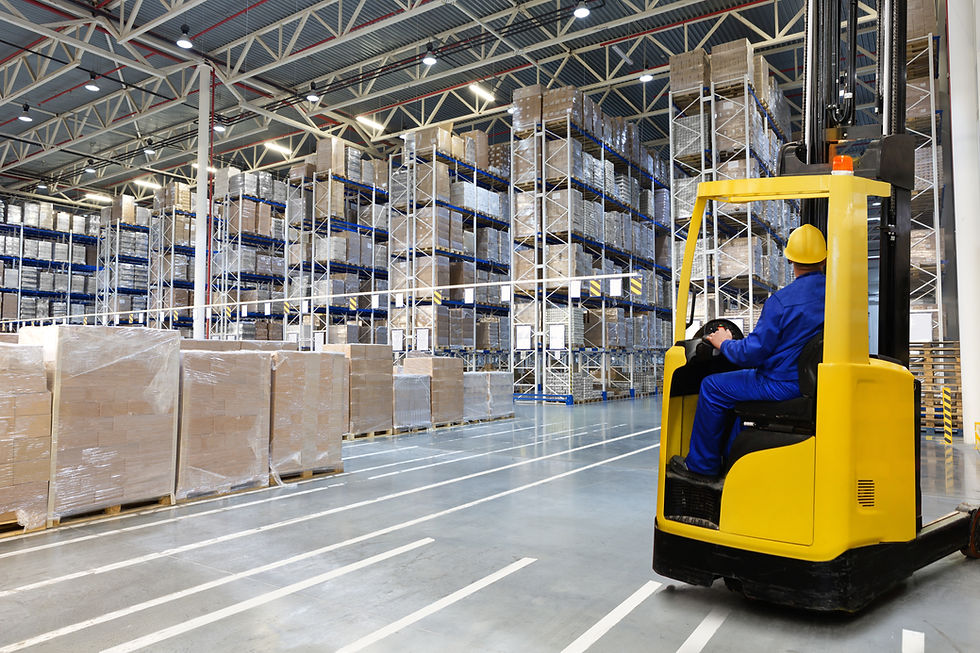Logistics, Location, Leverage: Inside the Strategy Behind Industrial Growth Zones
- Analysis by Current Business Review

- Apr 6
- 3 min read

Industrial real estate has become one of the most strategic assets in the global economy. Once viewed as a quiet corner of the property market, warehouses and logistics hubs are now central to how modern commerce functions. In 2025, location is not just about geography—it’s about infrastructure, proximity to growth corridors, and long-term economic leverage.
The rise of e-commerce, advanced manufacturing, and supply chain digitization has transformed how companies evaluate physical space. Investors, developers, and multinational operators are no longer treating industrial zones as utilitarian storage solutions—they’re treating them as growth engines.
Why Industrial Space Is Now a Power Asset
Unlike retail or office real estate, industrial properties serve as the backbone of movement. They power fulfillment, distribution, and production across global networks. And in a world increasingly shaped by just-in-time inventory, consumer expectations, and fast delivery, having the right space in the right place is a competitive necessity.
These properties are not just expanding—they’re evolving. Modern facilities are being built with flexible layouts, integrated automation capabilities, and ESG compliance designed for long-term operational efficiency. And because these assets often house essential operations, tenants tend to sign longer leases and invest heavily in customization, giving landlords greater stability and return.
Strategic Location Means More Than a Pin on the Map
In 2025, strategic industrial growth zones aren’t chosen just by looking at a map—they’re selected through a multilayered analysis of infrastructure, access, labor, and trade policy. The most sought-after regions typically offer:
• Proximity to key ports, highways, or intermodal transport
• Local government incentives to support logistics and job creation
• Access to a skilled labor pool
• Alignment with broader regional development strategies
From Dubai to Singapore to northern Mexico, these locations are emerging as logistics hubs for global commerce, attracting both domestic investment and foreign capital. In many cases, governments are playing an active role, creating special economic zones or free trade corridors that attract long-term tenants and developers alike.
Developers Are Building for a Different Era
Today’s industrial developments are being designed like ecosystems—not just boxes. Developers are creating smart parks that integrate technology, allow for flexible tenant expansion, and meet the ESG requirements that large corporations now demand. Many industrial sites are being outfitted with renewable energy, intelligent HVAC systems, and real-time supply chain data infrastructure.
This shift isn’t just aesthetic—it’s strategic. These features enhance tenant appeal, improve operational performance, and reduce long-term costs. Industrial real estate is no longer about durability alone—it’s about intelligence, connectivity, and scalability.
The Investment Perspective
Institutional investors are increasingly treating industrial assets as core holdings. They see the long-term fundamentals: consistent demand, limited vacancy, rising rental rates, and tenants that treat facilities as mission-critical.
Private equity firms and REITs are expanding into secondary and tertiary markets, looking for the next major corridor before it becomes saturated. And as global infrastructure spending increases, investors are positioning themselves alongside road, rail, and port upgrades that will define the next wave of industrial expansion.
The Bottom Line
Industrial real estate is no longer the silent performer—it’s one of the most strategic plays in the global market. In 2025, the intersection of logistics, location, and leverage is shaping the future of commerce, trade, and infrastructure.
From fulfillment centers to smart logistics parks, the spaces built today will power the movement of tomorrow. The question for investors and operators is no longer whether to enter this space—it’s where, how fast, and with whom.




Comments